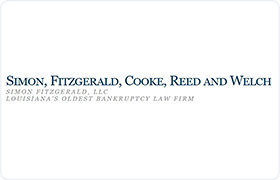Plain Dealing Bankruptcy & Debt Lawyer, Louisiana
Sponsored Law Firm
-
 x
x

Click For More Info:
-
Simon, Fitzgerald, Cooke, Reed and Welch
4700 Line Ave Ste 200 Shreveport, LA 71106» view mapBankruptcy & Debt Law Experienced Attorneys Serving You
The law firm of Simon, Fitzgerald, Cooke, Reed and Welch has helped thousands of people find true relief from debt through bankruptcy
800-769-0341
Lars Laban Levy
✓ VERIFIEDBankruptcy & Debt
L. LABAN LEVY is a partner with the law firm of Simon, Fitzgerald, Cooke, Reed & Welch. Mr. Levy graduated from Northwestern State University with a B... (more)
Kelli Rene Cook
✓ VERIFIEDBankruptcy & Debt, Foreclosure, Reorganization, Credit & Debt, Collection
Kelli Cook is a practicing lawyer in the state of Louisiana specializing in Bankruptcy. Ms. Cook received her J.D. from the Louisiana State University... (more)
Keith M. Welch
Consumer Bankruptcy, Consumer Bankruptcy, Consumer Bankruptcy, Bankruptcy
Status: In Good Standing
FREE CONSULTATION
CONTACT Lars Levy Ste 200 Shreveport, LA
Lars Levy Ste 200 Shreveport, LA AboutSimon, Fitzgerald, Cooke, Reed and Welch
AboutSimon, Fitzgerald, Cooke, Reed and Welch Practice AreasExpertise
Practice AreasExpertise


